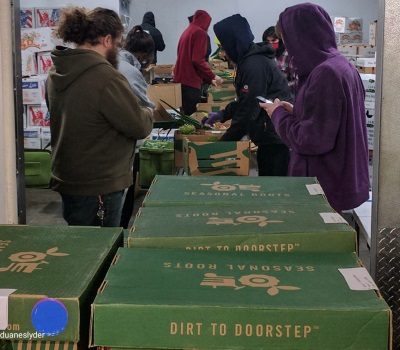
Purchasing local food benefits the environment In particular, CSA boxes are often filled with scrumptious, hard-to-find fruits and vegetables.Ĥ. SummaryĮating local often leads to the discovery of new and unique foods. These boxes sometimes contain unique veggies or fruits, including romanesco, celeriac, radicchio, and pattypan squash, which are difficult to find in stores. CSA boxes are filled with produce and prepared directly by farmers for consumers. Signing up for a community-supported agriculture (CSA) share is another great opportunity to expose yourself to local foods that may be new to you. Over years of shopping at farmers markets, I’ve tried locally grown and milled flour, cave-aged cheeses, teas made from herbs and plants foraged in my state, and so many interesting products. You may even find a new favorite food or ingredient. If you shop at farmers markets or local food co-ops, you’ll likely be introduced to a new or unique food that’s grown in your area.ĭiscovering these items is an excellent way to learn more about the food history and agricultural practices of your community. Eating local is an opportunity to try new foods Some foods, especially fruits and veggies, lose nutrients during transportation and storage, making local options usually more nutritious.ģ. Yet, if you have the opportunity to purchase locally grown options, you may get the biggest bang for your buck when it comes to nutrition. It’s important to note that all types of fruits and veggies - fresh or frozen, local or nonlocal - provide important nutrients and are good additions to your diet.

Since locally grown produce usually doesn’t have to travel very far or sit in storage for long, it retains more nutrients.Īlthough this may not always be the case, chances are the fresh asparagus at the farmers market is more nutritious than the bunch you see at the store from a distant place.
#Local food free#
Getting antioxidants from foods is important to fight reactive molecules called free radicals that contribute to disease ( 2, 3). What’s more, the antioxidant content of some produce declines during storage.
#Local food skin#
Vitamin C, an important water-soluble nutrient that’s necessary for healthy skin and tissues, begins to degrade in fresh fruits and veggies shortly after harvesting ( 1). Summaryįood that’s sourced from your community doesn’t need to be shipped from afar and is very fresh, especially when it comes to produce.įruits and veggies may lose some of their nutrients during transportation and processing or while sitting on grocery store shelves. Of course, using fresh, local foods isn’t the only way to cook enjoyable meals, but it’s certainly a treat for your taste buds. Most chefs and home cooks probably agree that the freshest ingredients tend to produce the best-tasting dishes. Other types of local food, such as eggs from a farmer who raises chicken, are also usually fresher than options that come from farther away. Depending on the type of produce, this may make them sweeter, juicier, and tastier. Local produce sold at farmers markets may be picked or harvested just a day or two before - or on the morning of the market.Īs a result, some fruits and veggies can stay on the vine to ripen longer or may have more favorable growing conditions than they would if they had to travel to the grocery store.

If you’ve ever enjoyed a perfectly ripe tomato or crate of strawberries from your farmers market, you know what I mean. This means that local food, especially produce, is often extremely fresh and tastes better than nonlocal items. Food that’s grown or produced in your community isn’t imported from distant states or countries like a lot of supermarket items.


 0 kommentar(er)
0 kommentar(er)
